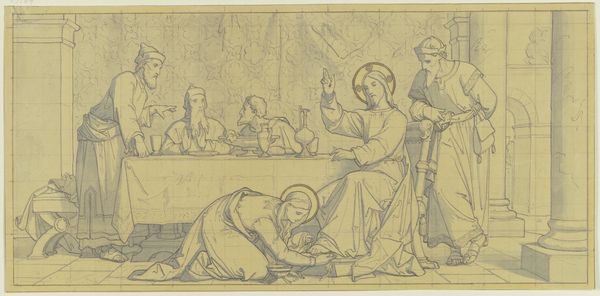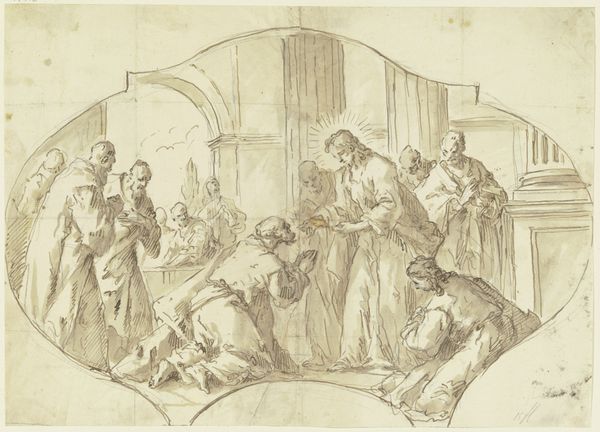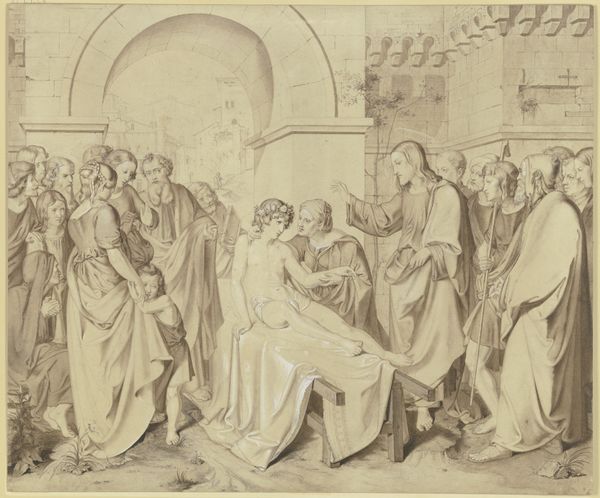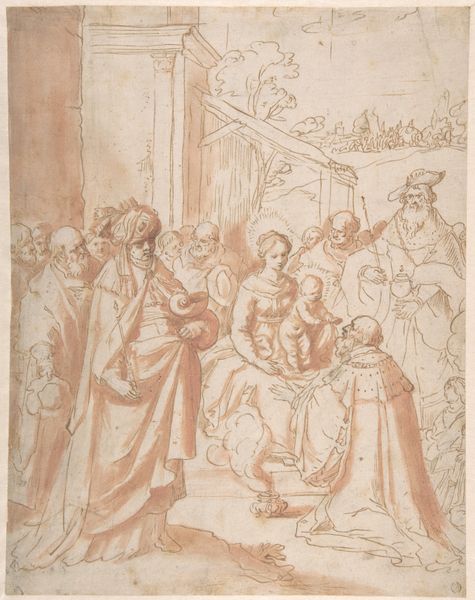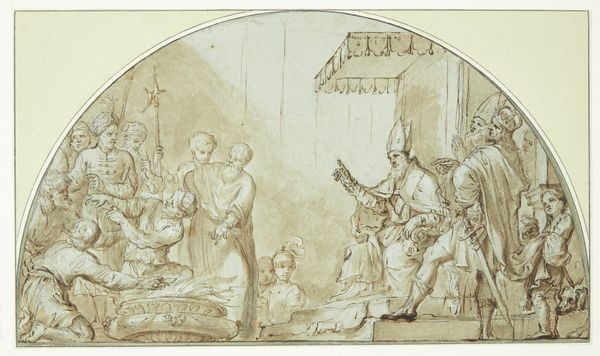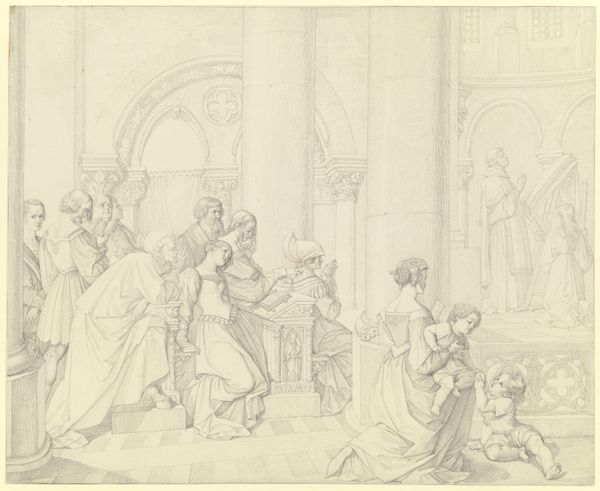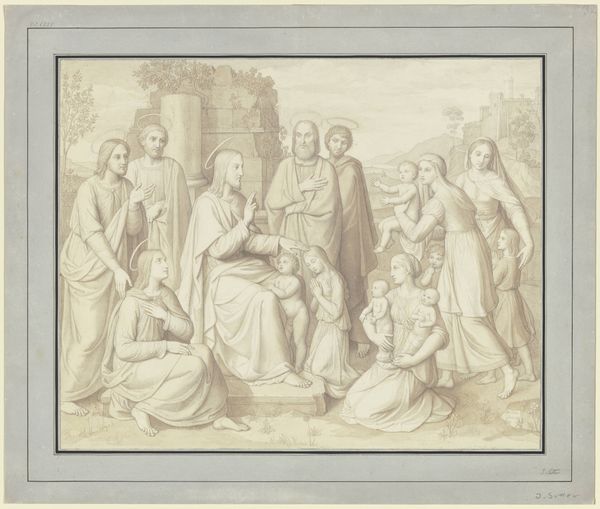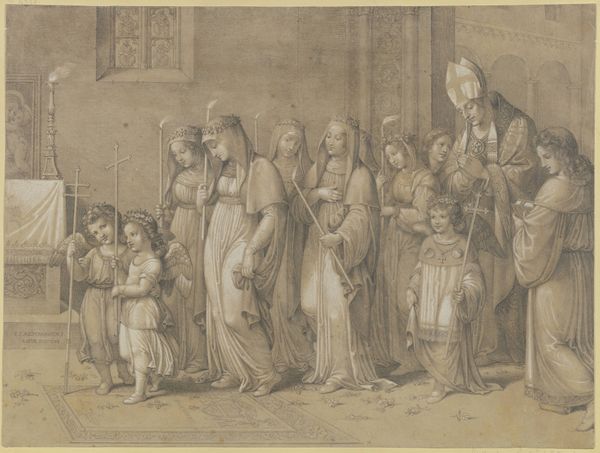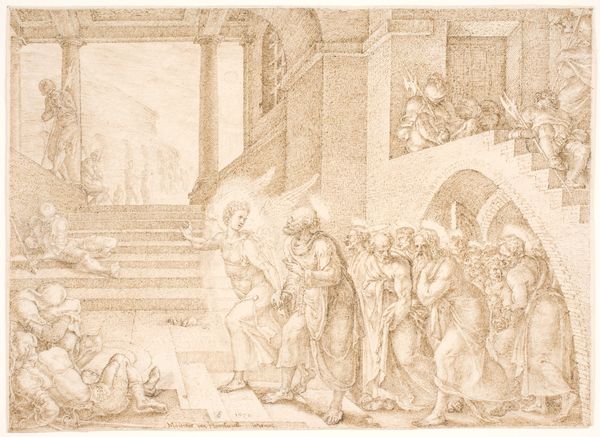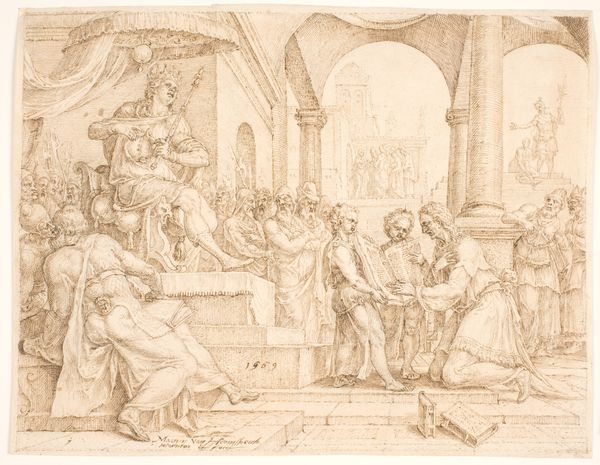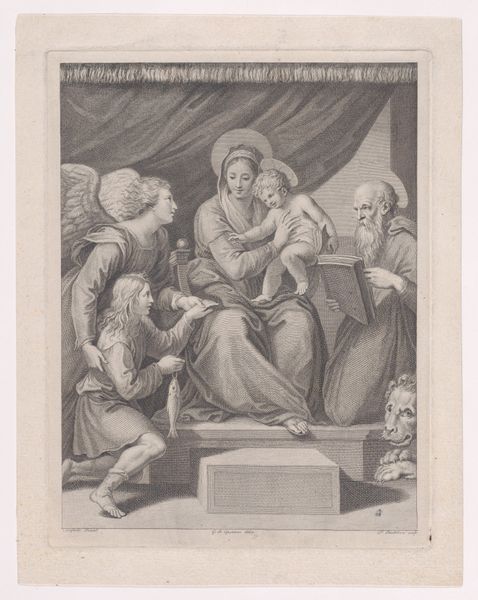
drawing, paper, ink
#
drawing
#
16_19th-century
#
medieval
#
narrative-art
#
paper
#
ink
#
german
#
history-painting
#
academic-art
Copyright: Public Domain
Editor: Here we have Dominik Mosler's "Die ersten Christen bringen den Zehnten dar" from 1871, rendered in ink on paper. It has a stark quality because it is monochrome, almost like a study or a blueprint. What are your thoughts on the work's formal qualities? Curator: This drawing employs a rigorously classical composition. Observe how Mosler structures the scene with a clear horizontal division and careful balancing of figures on either side of a central, almost symmetrical axis. Notice the crispness of the linework and the academic rendering of the figures; the controlled lines imbue the figures with statuesque dignity. Editor: I can see how the figures in the background, for example, are clearly delineated from one another. How does the piece lead us through the narrative? Curator: Note the foregrounded figure offering tribute; his dynamic pose immediately captures the viewer's attention and guides the eye towards the ecclesiastical figures beyond, forming a carefully constructed flow through the implied narrative space. Editor: So it’s as much about where the artist places everything within the frame as what’s literally depicted. What does that mean to you here? Curator: Precisely. By emphasizing the balanced relationship between figures, space, and line, Mosler crafts not merely an illustration of an event, but an embodiment of ordered harmony and structured faith through calculated visual forms. The subdued palette draws the viewer in, prompting quiet contemplation of structural elements over narrative flamboyance. Editor: So, despite being a narrative scene, the structure is what provides the most compelling insights. I didn't initially think of it that way! Thanks for pointing out the importance of line and arrangement. Curator: Indeed. Recognizing formal elements opens a portal to deeper appreciation. The way Mosler constructed this drawing transcends the representational aspect; instead, it speaks volumes about structural integrity.
Comments
No comments
Be the first to comment and join the conversation on the ultimate creative platform.
